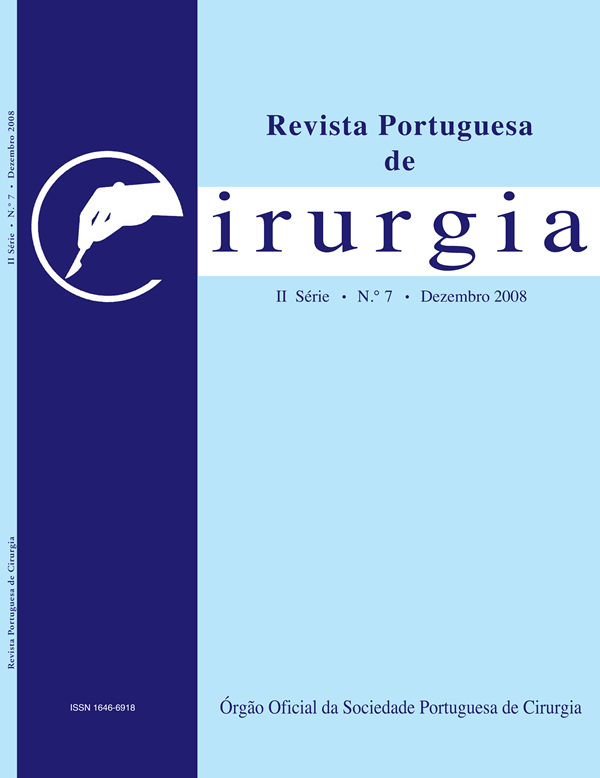Inguinal hernia repair according to 3 mesh techniques: a retrospective comparative study
Abstract
AIM: Retrospective analisis of the outcome in the immediate and late postoperative care of inguinal hernioplasty according to 3 mesh techniques.
Matherial and Methods: From 1997 until 2005, a 9-year period, 562 inguinal hernioplasty procedures were conducted in 496 patients at Surgery I Ward of University Hospitals of Coimbra. Male gender (n=453) was the most predominant and the mean age was 59 years [16-98]. Elective repair was performed in the majority of patients (n=472). The most frequent inguinal herniation was indirect hernia (n=314), followed by direct hernia (n=320) and mixed (direct and indirect) hernia (n=28). Polypropylene mesh was employed as “patch”, “patch and plug” or PHS®. A retrospective analysis of the patient`s clinical records was done and a questionnaire was sent to each patient in October 2006. A statistical analysis was performed.
Results: Postoperative mortality was 0%. However, immediate postoperative complications occurred in 21 (4.2%) procedures, such as: haematoma (n=8; 38%), urinary retention (n=5; 23.8%), bruises (n=4; 19%), wound infection (n=1; 4.8%), cystitis (n=1; 4.8%), paralytic ileus (n=1; 4.8%) and urticariform reaction (n=1; 4.8%).
The questionnaire was answered by 239 (48.2%) patients, in whom 266 inguinal hernioplasty procedures were performed. Recurrence rate was 2.2% (n=6). Recurrent indirect inguinal hernia was the most common (n=5). Mesh for recurrent hernia repair was employed as “patch” (n=2) and “patch and plug” (n=4). Primary recurrence occurred in 5 cases and secondary recurrence in one.
Conclusions: Inguinal hernia occurred mostly in man and as an indirect hernia. Polypropylene mesh was employed mainly as “patch” and “patch and plug”. There were no significant differences between the mesh techniques and the postoperative complications, as well as chronic groin pain and recurrence rate.
Downloads
Downloads
Published
Issue
Section
License
Para permitir ao editor a disseminação do trabalho do(s) autor(es) na sua máxima extensão, o(s) autor(es) deverá(ão) assinar uma Declaração de Cedência dos Direitos de Propriedade (Copyright). O acordo de transferência, (Transfer Agreement), transfere a propriedade do artigo do(s) autor(es) para a Sociedade Portuguesa de Cirurgia.
Se o artigo contiver extractos (incluindo ilustrações) de, ou for baseado no todo ou em parte em outros trabalhos com copyright (incluindo, para evitar dúvidas, material de fontes online ou de intranet), o(s) autor(es) tem(êm) de obter, dos proprietários dos respectivos copyrights, autorização escrita para reprodução desses extractos do(s) artigo(s) em todos os territórios e edições e em todos os meios de expressão e línguas. Todas os formulários de autorização devem ser fornecidos aos editores quando da entrega do artigo.



